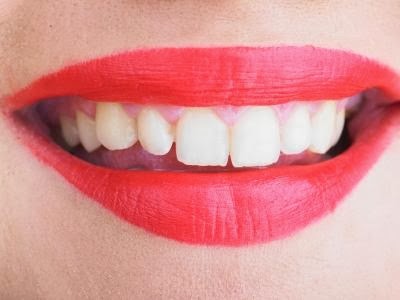This four-part article series provides an in-depth explanation of Temporomandibular Joint Disorders (TMD), looking at causes, symptoms, diagnosis and treatment.
Welcome back to our four-part article series on the causes, symptoms and treatment options for the disorders that affect the temporomandibular joint (TMJ). In our previous article, the third installment of the series, an experienced oral surgeon in Silver Spring began discussing the various conservative treatments there are to alleviate the pain, stiffness and discomfort associated with temporomandibular disorders (TMD).
When used collectively, these therapies offer a solid starting point and, in most cases, a conclusive solution to the problem. If, however, the basic treatment approach is not successful, the dentist may recommend a more aggressive treatment approach, such as ultrasound, radio wave therapy, transcutaneous electrical nerve stimulation (TENS) or trigger-point injections. Surgery is a last resort and is usually reserved for severe cases of TMD.
In this article, the final installment of the series, a Maryland dental implants specialist will explain what these more aggressive treatment methods are.
Alternative TMD Treatment Approaches:
 1. Ultrasound supplies the joint with a deep heat that alleviates stiffness and pain.
1. Ultrasound supplies the joint with a deep heat that alleviates stiffness and pain.
2. Radio Wave Therapy increases blood flow to the joint via gentle electrical stimulation. This helps to relieve pain.
3. Transcutaneous Electrical Nerve Stimulation (TENS) makes use of gentle electrical currents to relax the facial muscles and joint, thus providing relief.
4. Trigger-point Injections directly supply painful and tense facial and neck muscles with pain medication.
Surgery for TMD
“A last resort treatment for temporomandibular disorders is surgery,” explains the dental expert in Silver Spring. “Only once we have exhausted all other treatment options will be recommend surgery, predominantly because the outcomes of this treatment cannot be reversed.”
There are three main kinds of TMD related surgical procedures and the one recommended to Silver Spring residents depends upon their particular problem.
1. Arthrocentesis
An arthrocentesis is a simple and straightforward procedure that can be performed in the office of a skilled dentist. It’s usually recommended to Silver Spring residents who have experienced a sudden onset of TMD symptoms, such as lockjaw or restricted opening. These patients will not have a significant history of TMD. The procedure is performed under anesthesia and involves the irrigation and sterilization of the affected joint.
2. Arthroscopy
An arthroscopy is performed under general anesthesia. The dentist will first determine the cause of TMD by examining the joint and surrounding area via a small incision and a special dental light and tiny camera. He or she will correct and realign the disc and joint and remove and inflamed tissue (if present). This procedure only involves a small, minor incision and so is far less invasive than open joint surgery. It also has a shorter recovery time.
3. Open Joint Surgery
 “In certain severe cases of TMD, open joint surgery may be necessary in order to provide the patient with permanent respite from the painful symptoms of this condition,” explains a Maryland dental specialist. “No dentist recommends surgery lightly, so it’s only after much deliberation that he or she will decide to proceed with open joint surgery.”
“In certain severe cases of TMD, open joint surgery may be necessary in order to provide the patient with permanent respite from the painful symptoms of this condition,” explains a Maryland dental specialist. “No dentist recommends surgery lightly, so it’s only after much deliberation that he or she will decide to proceed with open joint surgery.”
This procedure is performed under general anesthesia and involves the complete exposure of the joint, unlike an arthroscopy, which only requires a small incision. The exact procedure followed to provide treatment depends on cause of TMD, for example, the deterioration of the bone comprising the joint or the presence of growths and tumors. The dentist in Silver Spring will advise you accordingly and explain what you can expect prior to the procedure.
 “Treating TMD is far more complex than simply taking a course of prescribed medication,” explains a Silver Spring cosmetic dentist. “The kind of treatment we recommend also depends substantially on how severe a patient’s condition is. Usually, the best approach is to begin with conservative therapy, which should appease the symptoms. If the symptoms persist, surgery may ultimately be required.”
“Treating TMD is far more complex than simply taking a course of prescribed medication,” explains a Silver Spring cosmetic dentist. “The kind of treatment we recommend also depends substantially on how severe a patient’s condition is. Usually, the best approach is to begin with conservative therapy, which should appease the symptoms. If the symptoms persist, surgery may ultimately be required.” Adjust Your Diet: Refrain from eating hard, crunchy foods (hard candy, crisps, raw vegetables, ice, caramels) and foods that require you to stretch open your mouth to fit. Rather, stick to a softer diet (yogurt, soup, cooked vegetables, mashed potato, fish, etc.) for a few weeks or as recommended by your dentist. Cut smaller bites and chew gently. You’re trying to rest the TMJ and give the swelling and inflammation a chance to subside.
Adjust Your Diet: Refrain from eating hard, crunchy foods (hard candy, crisps, raw vegetables, ice, caramels) and foods that require you to stretch open your mouth to fit. Rather, stick to a softer diet (yogurt, soup, cooked vegetables, mashed potato, fish, etc.) for a few weeks or as recommended by your dentist. Cut smaller bites and chew gently. You’re trying to rest the TMJ and give the swelling and inflammation a chance to subside. You may have TMD if you have noticed one or more of the following symptoms:
You may have TMD if you have noticed one or more of the following symptoms:




 “When the gums recede and pull away from the crowns of the teeth, the roots become exposed to the food you eat, bacteria and abrasive actions, such as toothbrushing,” explains the dental implants specialist in Maryland. “The difference between your tooth roots and crowns is that the latter is specifically protected against general wear-and-tear by dental enamel. So, when the roots become exposed, they can easily become damaged and decayed.
“When the gums recede and pull away from the crowns of the teeth, the roots become exposed to the food you eat, bacteria and abrasive actions, such as toothbrushing,” explains the dental implants specialist in Maryland. “The difference between your tooth roots and crowns is that the latter is specifically protected against general wear-and-tear by dental enamel. So, when the roots become exposed, they can easily become damaged and decayed. If your dentist determines that the extent of gum recession is too far advanced and the pockets between your tooth roots and gums too deep, you may be referred to a periodontist for surgery to eliminate diseased tissue and repair the damage done to your gums. This may involve procedures such as pocket depth reduction, soft tissue grafting and regeneration. These will be fully explained in Part 4 of this article series, but for now, the orthodontist in Silver Spring MD provides us with a list of gum recession prevention tips...
If your dentist determines that the extent of gum recession is too far advanced and the pockets between your tooth roots and gums too deep, you may be referred to a periodontist for surgery to eliminate diseased tissue and repair the damage done to your gums. This may involve procedures such as pocket depth reduction, soft tissue grafting and regeneration. These will be fully explained in Part 4 of this article series, but for now, the orthodontist in Silver Spring MD provides us with a list of gum recession prevention tips... Welcome back to our four-part article series on gum recession, it’s causes, symptoms and treatment. In our first installment, an experienced dentist in Silver Spring explained to us what gum recession was and the various symptoms it may present with. Aside from the obvious visual aspect of a receding gum line, this condition may also cause tooth sensitivity as a result of the exposure of the tooth roots. Silver Spring residents may also notice the exposed connection between the crown and tooth roots just above the gum line.
Welcome back to our four-part article series on gum recession, it’s causes, symptoms and treatment. In our first installment, an experienced dentist in Silver Spring explained to us what gum recession was and the various symptoms it may present with. Aside from the obvious visual aspect of a receding gum line, this condition may also cause tooth sensitivity as a result of the exposure of the tooth roots. Silver Spring residents may also notice the exposed connection between the crown and tooth roots just above the gum line. If you don’t brush and floss regularly and thoroughly, the accumulation of bacteria at the gum line can harden to form tartar. Unlike plaque, no amount of effort on your behalf will be sufficient to remove this… only a professional cleaning by a trained dentist in Silver Spring can remove tartar. This hard substance causes tooth decay, gum disease and gum recession. “Bad oral hygiene and a lack of preventative care is also the number one cause of tooth loss,” warns a dental implants specialist in Silver Spring.
If you don’t brush and floss regularly and thoroughly, the accumulation of bacteria at the gum line can harden to form tartar. Unlike plaque, no amount of effort on your behalf will be sufficient to remove this… only a professional cleaning by a trained dentist in Silver Spring can remove tartar. This hard substance causes tooth decay, gum disease and gum recession. “Bad oral hygiene and a lack of preventative care is also the number one cause of tooth loss,” warns a dental implants specialist in Silver Spring. It is well documented in medical literature that smoking puts patients at a higher risk of gum disease, which can lead to gum recession. “Smoking is also a considerable risk factor for tooth loss,” warns the dental implants specialist in Silver Spring. “So be warned and do what it takes to kick the habit.”
It is well documented in medical literature that smoking puts patients at a higher risk of gum disease, which can lead to gum recession. “Smoking is also a considerable risk factor for tooth loss,” warns the dental implants specialist in Silver Spring. “So be warned and do what it takes to kick the habit.”




 No matter how good your cleaning routine is, or how many sticks of celery you eat, good oral care also requires the help of professionals. It is generally recommended that you have your teeth professionally cleaned by an oral hygienist at least once every six months, although this varies from patient to patient.
No matter how good your cleaning routine is, or how many sticks of celery you eat, good oral care also requires the help of professionals. It is generally recommended that you have your teeth professionally cleaned by an oral hygienist at least once every six months, although this varies from patient to patient.




